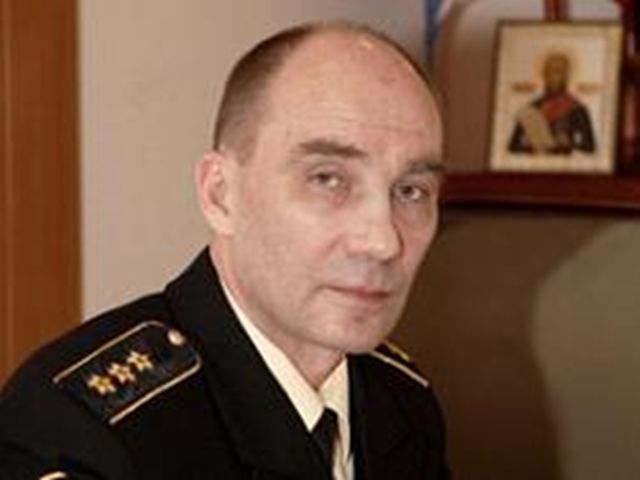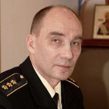
Medvedev Disciplines Top Naval Commanders for Negligence
Publication: Eurasia Daily Monitor Volume: 7 Issue: 151
By:

A thick haze of acrid and choking smoke from wildfires mixed with car engine emissions blankets Moscow. A record heat wave has engulfed most of European Russia for more than a month with temperatures exceeding 35 degrees celsius. According to official figures, by August 4, wildfires had killed 48 and destroyed 1,267 homes. Some 240,000 have been mobilized to fight the fires, but weather forecasters do not promise rain or any letup in the heat anytime soon. In Moscow, more accustomed to the harsh cold, public transport (including the metro) does not have any air-conditioning equipment or proper ventilation, as well as most homes, many public buildings and hospitals. The choking smoke and toxic gasses from the wildfires, including carbon monoxide, have penetrated the Moscow metro that carries up to 5 million passengers on workdays. The temperatures at some metro stations are approaching 35 degrees celsius. Doctors advise residents in Moscow to close all windows tight and stay at home if possible (Interfax, August 4).
Russians are bewildered and angry as the authorities seem to be unable to help them. Russia’s leaders –President, Dmitry Medvedev, and Prime Minister, Vladimir Putin– seem to be angry too. Last weekend, during a videoconference with local officials and governors, Putin compared the present crisis with the medieval invasions of Russia by Turkish-speaking nomads, German knights and Hitler’s Germany during World War II. “Russia survived everything and will again,” announced Putin, “Only if we consolidate and work effectively together.” Putin declared that now is not the time to apportion blame (www.premier.gov.ru, July 31).
Medvedev was forced, on August 4, to cut short his holiday in his summer Black Sea residence in Sochi and return to Moscow in a belligerent mood. At a Security Council meeting in the Kremlin Medvedev promised to immediately oust any officials guilty of allowing the fires to destroy “strategic facilities” and disciplined top naval commanders for negligence (www.news.kremlin.ru, August 4).
An Internet news site, lifenews.ru, first reported that on July 29, flames tore through a secret naval airbase in Kolomna, 100 kilometers (km) south-east of Moscow, destroying up to 200 aircraft worth 20 billion rubles ($600 million). Initially, the defense ministry tried to cover up the story by first declaring it to be erroneous, and then admitting that it was not an “airbase,” but logistic base office buildings, warehouses with unneeded equipment and vehicles were destroyed without any loss of life (ITAR TASS, August 3). It was later reported that the base in question –Central Air and Technical naval base (also known as base 2512)– has been used for 60 years to supply the entire naval aviation force with avionics, armaments, jet engines and other essential equipment (Interfax, August 3).
Medvedev did not elaborate about the equipment lost at base 2512, but implied “the consequences were heavy,” and that it was a result of “criminal negligence.” Medvedev officially reprimanded the Commander of the Russian Navy, Admiral Vladimir Vysotsky, and his First Deputy and Chief of Naval Staff, Admiral Alexander Tatarinov. Medvedev fired the Russian navy’s Chief of Logistics, Rear Admiral Sergei Sergeyev, and the Chief of Naval aviation, Major-General Nikolai Kuklev. Medvedev ousted three colonels: the commandant of 2512 base and two of Kuklev’s deputies. Under orders from Medvedev, Defense Minister, Anatoly Serdyukov, ousted five officers that served at base 2512 (Kommersant, August 5). Medvedev declared that further dismissals were possible later, after the entire crisis is finally defused (www.news.kremlin.ru, August 4).
The severity of the punishment handed out by Medvedev for a fire at a supply base that did not involve any human casualties surely reflects his overall anger, but also would indicate a large quantity of essential equipment was lost. The replacement of supplies lost at base 2512 could require billions of rubles, years of effort and, in some cases, may be simply impossible as the crisis in Russia’s defense industry has made the production of some essential components virtually impossible. Elements of Russian naval aviation could be grounded for a long time and maybe indefinitely, including the Su-33 jet fighters on Russia’s only aircraft carrier, the Kuznetsov. The Su-33 is no longer produced and reportedly at least four new Su-33 jet engines were destroyed at base 2512 (Vedomosti, August 5). The 2512 base contained 65,000 tons of equipment, which might have been entirely destroyed. An airborne forces supply base (3370) was damaged by fire near the 2512 base, but its losses seem less significant (Kommersant, August 4).
Fires have approached the Machine-building Construction Bureau in Kolomna that makes guided missiles, the Novovoronez nuclear power station near Voronez and the Tryokhgorny nuclear closed city in the Urals (Soviet code name –Zlatoust-36) that specializes in the assembly and dismantling of nuclear warheads. According to Rosatom’s Chief, Sergei Kiriyenko, the most dangerous situation has developed in the closed nuclear city of Sarov (Arzamas-16) where wildfires have penetrated the perimeter and advanced towards nuclear arms producing facilities. Kiriyenko assured Medvedev that “all explosive and radioactive material has been removed,” and guaranteed that even in a worst case scenario, that the fire is out of control, there will be no nuclear explosions or radioactive contamination (www.news.kremlin.ru, August 4).
The first Soviet nuclear weapon was made in 1949, in Sarov at the Institute of Experimental Physics, which continues to be the main nuclear design and production facility in Russia. Sarov is home to the electro-mechanical factory Avangard, specializing in warhead production and dismantling. Kiriyenko, referring to the speedy evacuation of “all explosive and radioactive material” is an apparent reference to the movement of live warheads that combine arms-grade plutonium, uranium, heavy water and high explosives initiating a nuclear blast. The threat of a nuclear explosion may indeed be remote, but removing all dangerous and radioactive materials from Sarov that has a closed territory of 260 square km and a population of 81,000, would be a challenge to accomplish in several hours, as Kiriyenko claims. The emergency movement to safety of possibly hundreds of tons of nuclear arms grade materials (capable of making thousands of bombs) is itself a highly risky endeavor.
It is unclear, where today in Russia it is truly safe. Medvedev has also ordered the Interior Minister, Rashid Nurgaliev, to use his forces “not to allow anarchy to develop” (www.news.kremlin.ru, August 4).




